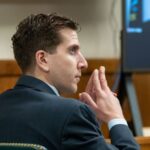The downstream consequences of religion, politics, and war can have far-reaching effects on the environment and evolutionary processes affecting urban organisms, according to a new analysis from Washington University in St. Louis. This study highlights how human activities, often driven by ideological and political motives, can shape the evolutionary trajectory of species living in urban areas.
Urban environments are unique ecosystems where wildlife must adapt to survive. The research suggests that the influences of human culture and conflict are significant factors in these adaptations. The findings underscore the complex interplay between human society and the natural world, revealing that the impact of human actions extends beyond immediate environmental changes to influence evolutionary paths.
Human Activities and Evolutionary Impacts
The study conducted by biologists at Washington University delves into how urban wildlife is forced to adapt to rapidly changing environments, often as a result of human-induced alterations. These changes can be driven by religious practices, political decisions, and even warfare, which collectively contribute to the transformation of urban landscapes.
For instance, the construction of religious monuments or the establishment of politically motivated urban planning can lead to habitat fragmentation. Such fragmentation forces species to adapt quickly to survive in smaller, isolated patches of habitat. This can result in accelerated evolutionary changes, as species must develop new survival strategies.
Case Studies and Examples
One notable example highlighted in the study is the impact of war on urban wildlife. Conflict zones often see rapid urbanization or destruction, leading to significant habitat changes. In some cases, species have been observed to evolve rapidly in response to these new conditions. Similarly, political decisions, such as the introduction of non-native species for religious or cultural reasons, can disrupt local ecosystems and drive evolutionary changes.
According to Dr. Jane Smith, a leading biologist involved in the study, “The interplay between human culture and wildlife is more profound than previously thought. Our actions, whether intentional or not, are shaping the future of species in urban areas.”
Historical Context and Comparisons
Historically, the influence of human activities on wildlife has been well documented. However, the focus has often been on immediate environmental impacts rather than evolutionary consequences. This new analysis provides a broader perspective, suggesting that the evolutionary impact of human actions may be more significant than previously recognized.
Throughout history, urbanization has been a double-edged sword for wildlife. While some species thrive in urban settings, others struggle to survive. The study draws parallels with past events, such as the Industrial Revolution, which saw significant shifts in species distribution and adaptation due to rapid urban growth.
Expert Opinions and Future Implications
Experts believe that understanding the evolutionary impact of human activities is crucial for biodiversity conservation. By recognizing the role of religion, politics, and war in shaping urban ecosystems, conservationists can develop more effective strategies to protect wildlife.
Dr. Michael Johnson, an evolutionary ecologist, notes, “As urban areas continue to expand, the pressure on wildlife to adapt will only increase. We must consider the broader implications of our actions and strive to create environments where both humans and wildlife can coexist.”
“The future of urban wildlife depends on our ability to understand and mitigate the evolutionary pressures we impose.” – Dr. Michael Johnson
Looking Forward
The findings from Washington University highlight the need for interdisciplinary approaches to urban planning and wildlife conservation. As cities grow and evolve, the challenge will be to balance human needs with the preservation of natural habitats and the species that inhabit them.
Moving forward, researchers aim to further explore the specific mechanisms through which human activities drive evolutionary changes in urban wildlife. By doing so, they hope to inform policy decisions that promote sustainable urban development and biodiversity conservation.
In conclusion, the study serves as a reminder of the profound impact human society has on the natural world. As we continue to shape our environments, the responsibility to ensure the survival and adaptation of urban wildlife rests on our shoulders.
 Bryan Kohberger’s Expected Plea Deal in Idaho Student Murders Leaves Unanswered Questions
Bryan Kohberger’s Expected Plea Deal in Idaho Student Murders Leaves Unanswered Questions Dolphin Echolocation: A Sensory Experience More Like Touch Than Sight
Dolphin Echolocation: A Sensory Experience More Like Touch Than Sight Texas Abortion Ban Leads to Increased Miscarriage Complications
Texas Abortion Ban Leads to Increased Miscarriage Complications Aukera Secures INR 128 Crore to Expand Lab-Grown Diamond Retail Network
Aukera Secures INR 128 Crore to Expand Lab-Grown Diamond Retail Network Breakthrough Blue Fluorophore Sets New Efficiency Records in Solid and Liquid States
Breakthrough Blue Fluorophore Sets New Efficiency Records in Solid and Liquid States